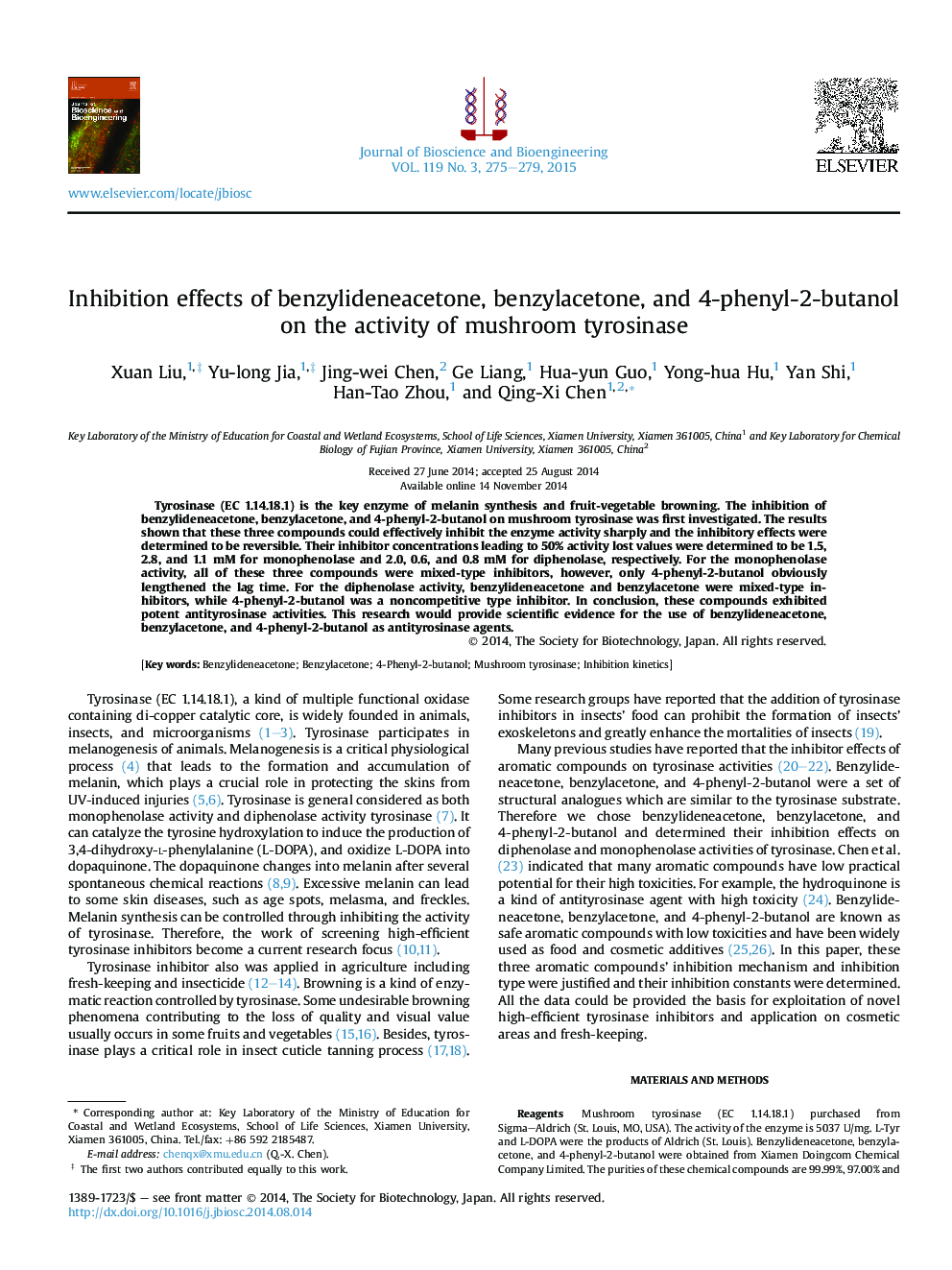| Article ID | Journal | Published Year | Pages | File Type |
|---|---|---|---|---|
| 20402 | Journal of Bioscience and Bioengineering | 2015 | 5 Pages |
•The benzylideneacetone, benzylacetone, and 4-phenyl-2-butanol was firstly used as antityrosinase agents.•The benzylideneacetone, benzylacetone, and 4-phenyl-2-butanol has already been used as food and cosmetic additives. So they have low toxicity.•Benzylideneacetone, benzylacetone, and 4-phenyl-2-butanol of different concentrations were firstly assayed for their effects on the oxidation of L-DOPA catalyzed by mushroom tyrosinase.•These three aromatic compounds' monophenolase inhibition mechanism and inhibition type were firstly justified and their inhibition constants were determined.
Tyrosinase (EC 1.14.18.1) is the key enzyme of melanin synthesis and fruit-vegetable browning. The inhibition of benzylideneacetone, benzylacetone, and 4-phenyl-2-butanol on mushroom tyrosinase was first investigated. The results shown that these three compounds could effectively inhibit the enzyme activity sharply and the inhibitory effects were determined to be reversible. Their inhibitor concentrations leading to 50% activity lost values were determined to be 1.5, 2.8, and 1.1 mM for monophenolase and 2.0, 0.6, and 0.8 mM for diphenolase, respectively. For the monophenolase activity, all of these three compounds were mixed-type inhibitors, however, only 4-phenyl-2-butanol obviously lengthened the lag time. For the diphenolase activity, benzylideneacetone and benzylacetone were mixed-type inhibitors, while 4-phenyl-2-butanol was a noncompetitive type inhibitor. In conclusion, these compounds exhibited potent antityrosinase activities. This research would provide scientific evidence for the use of benzylideneacetone, benzylacetone, and 4-phenyl-2-butanol as antityrosinase agents.
